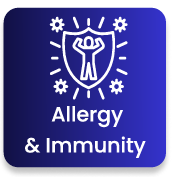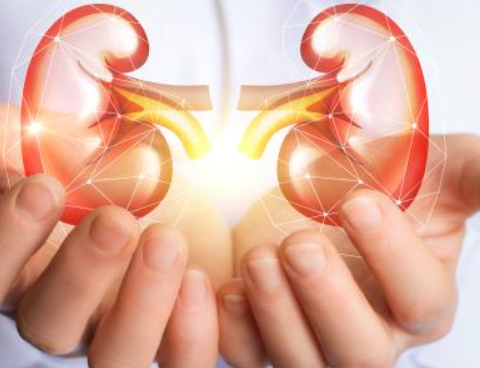
At Almurshidi Medical Tourism, we believe that beauty is a journey, not just a destination. As leaders in the field of cosmetic surgery, our mission is to provide you with transformative experiences that enhance your natural beauty and boost your confidence. Our state-of-the-art facility, combined with our team of highly skilled professionals, ensures that every…

At Almurshidi Medical Tourism, we believe that maintaining a healthy heart is crucial to overall well-being and quality of life. Our state-of-the-art cardiology services are designed to provide expert care, innovative treatments, and compassionate support to help you manage and improve your cardiovascular health. Whether you’re seeking preventive care or need treatment for existing heart…

Are you and your partner dreaming of starting a family, but facing challenges along the way? At Almurshidi Medical Tourism, we understand that the journey to parenthood can be filled with both hope and uncertainty. Our dedicated team of fertility specialists is here to offer you the support, expertise, and advanced treatments you need to…

At Almurshidi Medical Tourism, we believe that maintaining your health is a continuous journey, not a one-time event. One of the most essential components of this journey is your annual physical exam. This routine check-up is a cornerstone of preventive healthcare, designed to keep you informed about your health status and to catch potential issues…

At Almurshidi Medical Tourism, we understand that women’s health is not just about managing symptoms—it’s about empowering you to live your best life. Our dedicated team of gynecologists is here to provide expert care that prioritizes your comfort, well-being, and overall health. #*Why Gynecological Health Matters. Gynecology is a crucial aspect of women’s health that…

At Almurshidi Medical Tourism, we recognize that managing allergies and supporting a robust immune system are essential to maintaining overall health and quality of life. Our expert team is dedicated to providing comprehensive, cutting-edge care to address these critical aspects of your well-being. Whether you’re struggling with persistent allergies or seeking to boost your immune…

At Almurshidi Medical Tourism, we understand that true well-being extends beyond just feeling good—it’s about looking and being your best. Our comprehensive approach to medical health and beauty combines the latest in healthcare innovations with cutting-edge aesthetic treatments, tailored specifically to meet your individual needs. #*Why Choose Us? 1. Expert Medical Care. Our team of…

Erectile dysfunction (ED) is a condition that affects millions of men worldwide, yet it remains one of the most stigmatized and misunderstood health issues. At our clinic, we believe in providing clear, compassionate, and comprehensive information to help you understand and address this condition effectively. This guide aims to explore the causes of erectile dysfunction,…

In an era where personalized healthcare is more attainable than ever, Drug Genes is proud to announce the launch of our comprehensive **Pharmacogenomic (PG*) Package**. This innovative service represents a significant leap forward in tailoring medical treatments to individual genetic profiles, paving the way for more effective and safer medication strategies. Here’s why the PG*…

In the fast-paced world we live in, it’s easy to overlook the importance of regular health check-ups. At Almurshidi Medical Tourism, we believe that a proactive approach to your health can make all the difference. Our **Comprehensive Medical Check-Up** is designed to give you a thorough evaluation of your overall health, providing you with the…

In the journey of maintaining your health, preventive screenings are essential. At Almurshidi Medical Tourism, we understand the importance of early detection in ensuring your well-being. That’s why we’re excited to offer our **Comprehensive Mammogram and Breast Ultrasound Package**, designed to provide thorough and accurate assessments of your breast health. #*Why Choose Our Mammogram and…

In today’s fast-paced world, quality sleep often feels like a luxury rather than a necessity. Yet, it is fundamentally essential for our overall health and daily functioning. Many people struggle with sleep disorders without even realizing it, leading to a cascade of negative effects on their physical and mental health. This is where diagnostic sleep…

Welcome to Tree of Life Spa, your sanctuary for holistic wellness where fitness and relaxation intertwine seamlessly. At Tree of Life, we believe that true health goes beyond physical exercise; it encompasses mental clarity, emotional balance, and spiritual well-being. Our comprehensive fitness programs and spa treatments are meticulously designed to nurture every aspect of your…

Allergies can significantly impact your quality of life, causing discomfort and even leading to more serious health issues. At Almurshidi Medical Tourism, we are committed to helping you manage and understand your allergies better. One of the most effective methods to identify allergic triggers, particularly for airborne allergens, is the Skin Prick Test. In this…

Maintaining good lung health is crucial for overall well-being, yet it’s often overlooked until symptoms become severe. At Almurshidi Medical Tourism, we emphasize the importance of proactive health measures, and one key aspect of this is our Pulmonary Function Test (PFT). In this detailed guide, we’ll explore what a Pulmonary Function Test entails, why it’s…

Kidneys are essential organs that play a critical role in maintaining your overall health. They filter waste, regulate blood pressure, and balance essential minerals in your body. Yet, kidney issues can often go unnoticed until they become severe. At Almurshidi Medical Tourism, we understand the importance of proactive kidney care and offer a range of…

In today’s fast-paced world, it’s easy to overlook your health amidst the hustle and bustle of daily life. However, staying proactive about your well-being is crucial for a long, healthy life. That’s where a comprehensive full medical check-up comes in. At Almurshidi Medical Tourism, we believe in empowering you with the knowledge and tools to…

In the world of modern medicine and dentistry, accurate diagnostics are crucial for effective treatment planning and patient care. At Almurshidi Medical Tourism, we are proud to offer state-of-the-art X-Ray and Imaging services, including our advanced Central Scanner technology. Our commitment to using the latest imaging technology ensures that our patients receive precise diagnoses and…

At Almurshidi Medical Tourism, we believe that a healthy smile is a beautiful smile. Our mission is to provide comprehensive dental care in a comfortable and welcoming environment. Whether you’re looking for routine check-ups or advanced treatments, our expert team is here to ensure your dental health is in the best hands. #*Our Services**…

A kidney transplant can be a life-changing procedure, offering renewed health and vitality to those suffering from chronic kidney disease. At Almurshidi Medical Tourism, we are dedicated to providing exceptional care for individuals considering or undergoing a kidney transplant. Our website is a comprehensive resource designed to guide you through every step of the process,…
